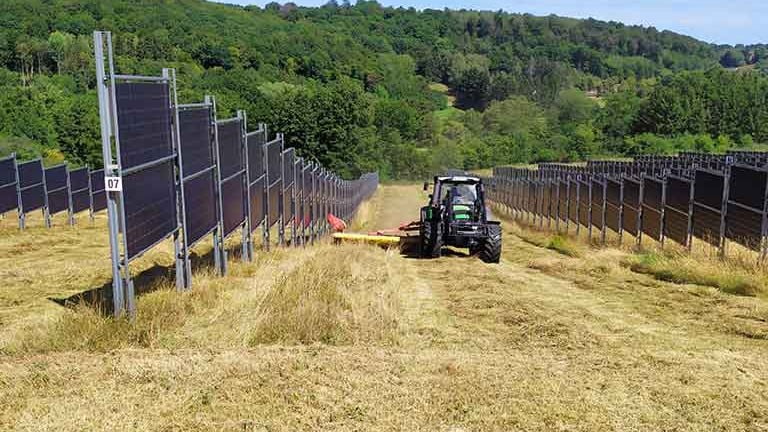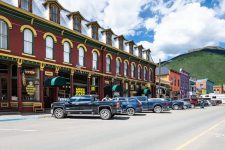Next2Sun, iSun Build Vertical Agrivoltaics System in Vermont
2 min read
After collaborating since the beginning of 2023 to jointly establish Next2Sun’s vertical agrivoltaics system in the United States, iSun and Next2Sun said that construction of the plant will begin in Vermont early this year.
Agrivoltaic projects feature solar panel installation on farms, allowing for solar development without the conversion of agricultural land. Solar expansion is expected alongside the global goal of tripling renewable energy capacity in the coming years, so this method could provide a solution to land use conflicts between the agricultural and renewable energy sectors.
Next2Sun’s vertical bifacial photovoltaic technology allows solar modules to capture solar energy during low availability and also reportedly allows 90% of land to remain available for conventional agricultural use. The technology will be used for the companies’ project in Vermont, which will span 3.7 acres and feature 138 solar modules placed amidst rows of vegetable and saffron crops.
“The Next2Sun system is an excellent supplement to our product portfolio,” said iSun CEO Jeffrey Peck. “Thanks to the vertical mounting of the modules and the adaptability of the installation to the needs of the farmer, the valuable land is almost completely preserved for agriculture.”
The project is supported by the German Federal Ministry for Economic Affairs and Climate Action and will be Next2Sun’s first agrivoltaics system built in the U.S.
Benefits of Vertical Solar Energy Model, Revenue Opportunity for Land Owners
Next2Sun’s vertical panels, while not as common as conventional photovoltaic systems, collect solar energy on two sides and take up less land area than horizontal, south-facing panels. The company promotes the use of this vertical system as an opportunity for landowners who may want their land to serve multiple purposes, providing the potential for additional income from solar energy generation.
While most solar panels collect the majority of energy at midday when the sun is high, the two-sided panels may collect energy in the mornings and evenings when solar generation is typically low. The company also offers a solar fence that uses the same concept as agrivoltaics, instead making use of the solar panels as a fence for livestock farming or residential use.
Farmers, municipalities, and companies may therefore use their land as they typically would, adding these vertical solar panels as a way to produce energy for their own use or for sale without compromising on the land’s primary purpose.





